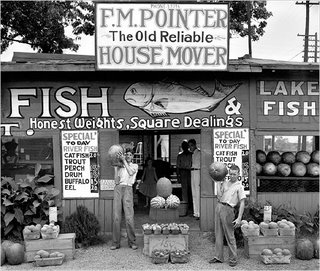
By MICHAEL KIMMELMAN @ NY Times
A PHOTOGRAPHER snaps a picture. If it’s a camera with film, a negative is made; if it’s a digital camera, a file is produced. A printer, in a dark room using chemicals, or at a computer screen, can tinker with the image, crop it, enlarge it, make it lighter or darker, highlight one part or obscure another.
In other words, the image produced by the camera, whether it’s a negative or a digital file, is only the matrix for the work of art. It is not the work itself, although if the photographer is a journalist, any hanky-panky in the printing process comes at the potential cost of the picture’s integrity. Digital technology has not introduced manipulation into this universe; it has only multiplied the opportunities for mischief.
I dawdle over this familiar ground because the digitally produced prints of classic Walker Evans photographs, now at the UBS Art Gallery, are so seductive and luxurious — velvety, full of rich detail, poster-size in a few cases and generally cinematic — that they raise some basic issues about the nature of photography.
For starters they suggest a simple question, whether luxury and richness are apt qualities for pictures of Depression-era tenant farmers in the American South. These are, I must say, almost uncomfortably beautiful. In “Let Us Now Praise Famous Men,” where Evans first published many of these photographs in 1941, James Agee, his collaborator, wrote that the book might best have been issued on newsprint to suit the simple and honest character of its subjects. Photography compromises its own value, Agee thought, when it becomes pretentious.
READ ON
No comments:
Post a Comment